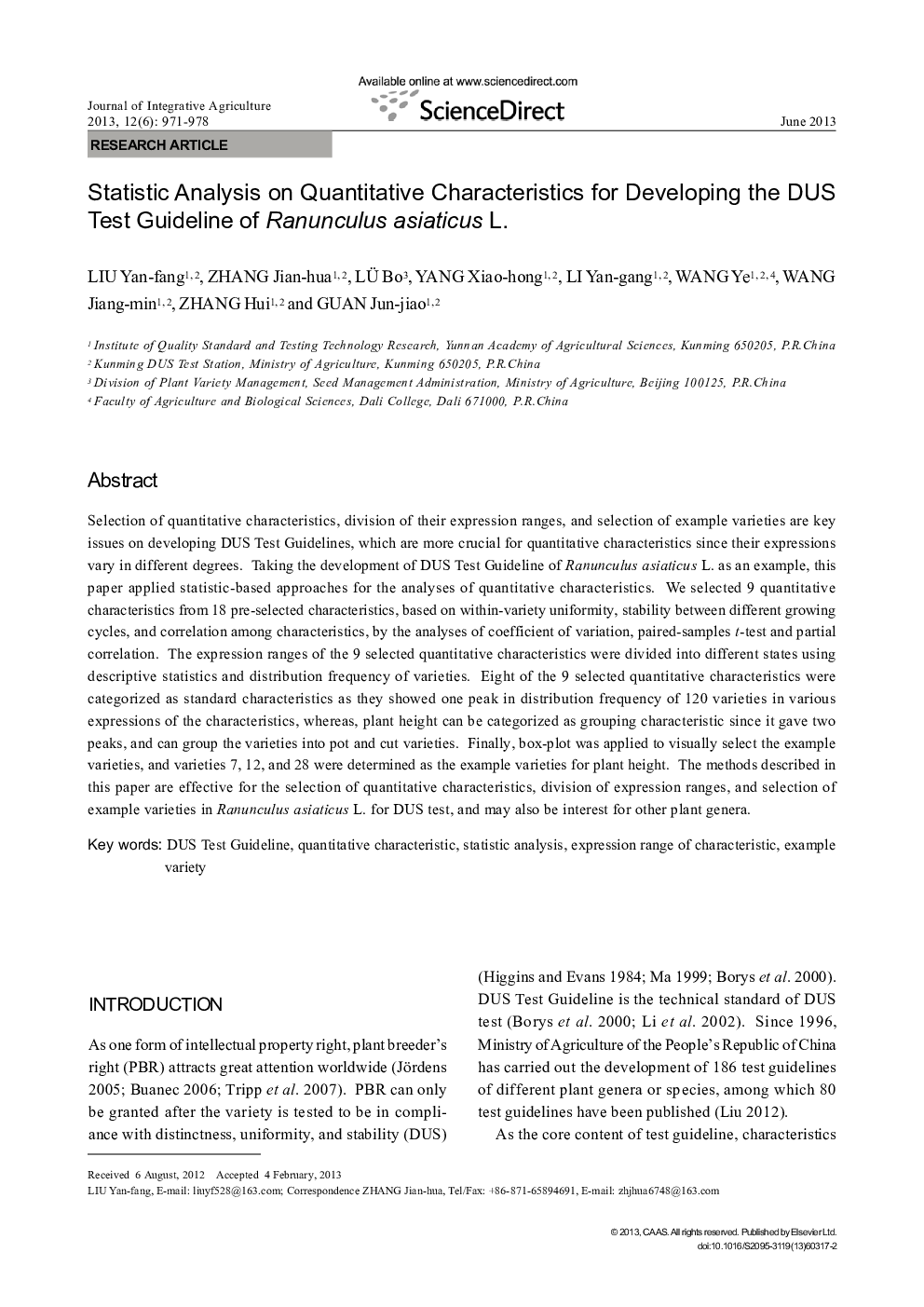| Article ID | Journal | Published Year | Pages | File Type |
|---|---|---|---|---|
| 4495050 | Journal of Integrative Agriculture | 2013 | 8 Pages |
Selection of quantitative characteristics, division of their expression ranges, and selection of example varieties are key issues on developing DUS Test Guidelines, which are more crucial for quantitative characteristics since their expressions vary in different degrees. Taking the development of DUS Test Guideline of Ranunculus asiaticus L. as an example, this paper applied statistic-based approaches for the analyses of quantitative characteristics. We selected 9 quantitative characteristics from 18 pre-selected characteristics, based on within-variety uniformity, stability between different growing cycles, and correlation among characteristics, by the analyses of coefficient of variation, paired-samples t-test and partial correlation. The expression ranges of the 9 selected quantitative characteristics were divided into different states using descriptive statistics and distribution frequency of varieties. Eight of the 9 selected quantitative characteristics were categorized as standard characteristics as they showed one peak in distribution frequency of 120 varieties in various expressions of the characteristics, whereas, plant height can be categorized as grouping characteristic since it gave two peaks, and can group the varieties into pot and cut varieties. Finally, box-plot was applied to visually select the example varieties, and varieties 7, 12, and 28 were determined as the example varieties for plant height. The methods described in this paper are effective for the selection of quantitative characteristics, division of expression ranges, and selection of example varieties in Ranunculus asiaticus L. for DUS test, and may also be interest for other plant genera.
